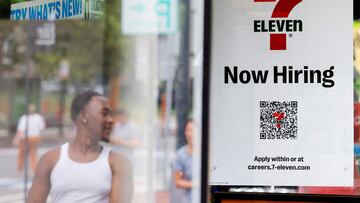Inflation down, unemployment up: How much will the Fed cut rates in September 2024?
One million more workers were unemployed in July, compared to the figure captured a year earlier. What this will mean for the interest rates...


On Wednesday, the Federal Reserve announced that no changes would be made to the Federal Funds Rate (FFR), established by the US central bank to indicate where the economy stands and the risk lenders are taking on. The Fed increased the FFR rapidly in 2022 as concerns over inflation being a more permanent feature of the post-Covid recovery emerged among economists. Additionally, as inflation began to take hold, the Russian escalation of the war in Ukraine sent energy markets soaring, pushing prices further as transporting practically all goods rose. However, since this inflationary period took hold, independent analysis has concluded that in addition to supply chain breakdowns, corporate greed, and profit-seeking were a contributing factor to the higher prices paid by concerns. While companies may have needed to pass costs onto consumers, their profits continued to grow, indicating that they set price tags over and above what was needed to maintain their margins.
Read Chair Powell's full opening statement from the #FOMC press conference (PDF): https://t.co/knCMyJaBJ3 pic.twitter.com/fqEa3Jat2f
— Federal Reserve (@federalreserve) July 31, 2024
Next week, the Bureau of Labor Statistics (BLS) will release the Consumer Price Index for July. In June, the index showed the first decrease in average prices, the first time since May 2020.
For the average household, this has meant that since 2019, real wages remained where they were, as most goods and services have seen their prices rise, and incomes have not kept pace. Now, the Bureau of Labor Statistics is reporting that in July, the national unemployment rate rose to 4.3 percent, compared to 3.5 percent a year earlier. While still at a historic low, more than 1.2 million workers have been shed from the economy, and labor force participation has only grown 0.1 percent.
The Fed made no indication that it would be prepared to lower interest rates in September. Instead, in the press release explaining the decision of the Free Market Open Committee. “In assessing the appropriate stance of monetary policy, the Committee will continue to monitor the implications of incoming information for the economic outlook,” explained the FOMC, adding that they stand “prepared to adjust the stance of monetary policy as appropriate if risks emerge that could impede the attainment of the Committee’s goals.”
How unemployment has shifted by demographics
Workers from all other racial and ethnic groups tracked by the BLS have seen unemployment rise over the last year. Asian workers have seen their unemployment rise by 1.4 percent, the most of any group. However, at 3.7 percent, the unemployment rate for Asian workers is the lowest among racial and ethnic groups. Black workers have seen their unemployment rate rise 0.6 percent to 6.3 percent, which represents the highest rate among these demographic groups.
Unemployment rate rises to 4.3% in July; payroll employment edges up by 114,000 #JobsReport #BLSdata https://t.co/ZwrVfLviqL
— BLS-Labor Statistics (@BLS_gov) August 2, 2024
Related stories
As far as gender is concerned, adult men over twenty have seen their unemployment rate increase 0.6 percent over the last year, while that for women of the same age group rose 0.7 percent. Currently, 4 percent of men over twenty are unemployed, while the figure for women is 3.8 percent.
While the Fed is likely pleased with the news on inflation, rapid increases in unemployment are typically associated with the recession, and since the Fed has a dual mandate to create a strong labor market for workers, monetary policy that would further threaten jobs is likely to be avoided. However, some economists like Bill Dudley, who served as the president of the Federal Reserve Bank of New York from 2009 to 2018, wrote in Bloomberg that current labor market conditions require the Federal Reserve to begin lowering rates, with unemployment having increased over 0.5 percent marker over the last year. The Fed did not opt to lower rates, and for economists like Dudley, that could be meant that the labor market is likely to see unemployment continue to rise this summer.
Complete your personal details to comment